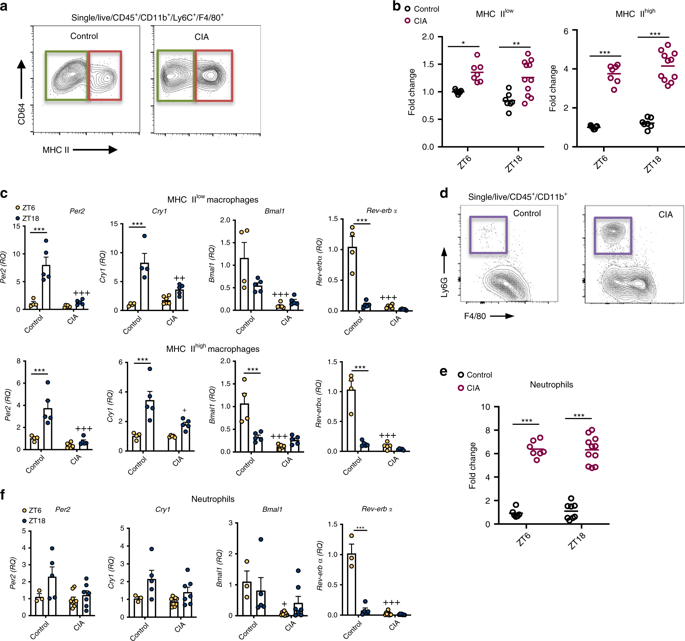Nature Communications ( IF 14.7 ) Pub Date : 2020-04-03 , DOI: 10.1038/s41467-020-15525-0 L E Hand 1 , K J Gray 1 , S H Dickson 1 , D A Simpkins 1 , D W Ray 2 , J E Konkel 3 , M R Hepworth 3 , J E Gibbs 1, 3

|
The circadian clock is an intrinsic oscillator that imparts 24 h rhythms on immunity. This clock drives rhythmic repression of inflammatory arthritis during the night in mice, but mechanisms underlying this effect are not clear. Here we show that the amplitude of intrinsic oscillators within macrophages and neutrophils is limited by the chronic inflammatory environment, suggesting that rhythms in inflammatory mediators might not be a direct consequence of intrinsic clocks. Anti-inflammatory regulatory T (Treg) cells within the joints show diurnal variation, with numbers peaking during the nadir of inflammation. Furthermore, the anti-inflammatory action of Treg cells on innate immune cells contributes to the night-time repression of inflammation. Treg cells do not seem to have intrinsic circadian oscillators, suggesting that rhythmic function might be a consequence of external signals. These data support a model in which non-rhythmic Treg cells are driven to rhythmic activity by systemic signals to confer a circadian signature to chronic arthritis.
中文翻译:

调节性 T 细胞赋予炎症性关节炎昼夜节律特征。
生物钟是一种内在的振荡器,它赋予免疫力 24 小时节律。这个时钟在小鼠的夜间驱动炎症性关节炎的节律性抑制,但这种作用的机制尚不清楚。在这里,我们表明巨噬细胞和中性粒细胞内内在振荡器的振幅受到慢性炎症环境的限制,这表明炎症介质的节律可能不是内在时钟的直接结果。关节内的抗炎调节 T (Treg) 细胞表现出昼夜变化,其数量在炎症最低点时达到峰值。此外,Treg 细胞对先天免疫细胞的抗炎作用有助于夜间抑制炎症。Treg 细胞似乎没有内在的昼夜节律振荡器,这表明节律功能可能是外部信号的结果。这些数据支持一种模型,其中非节律性 Treg 细胞通过全身信号驱动产生节律性活动,从而赋予慢性关节炎昼夜节律特征。











































 京公网安备 11010802027423号
京公网安备 11010802027423号